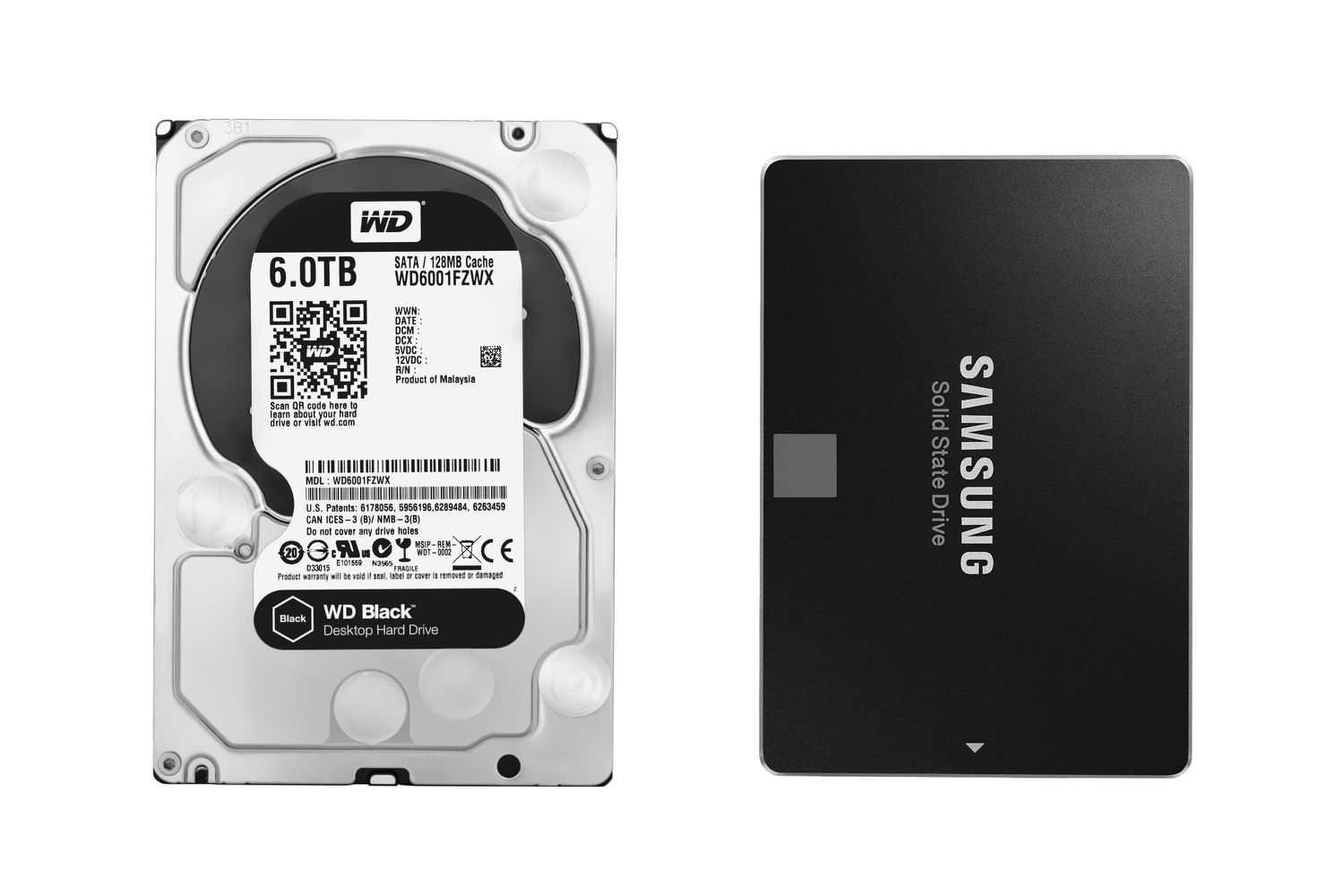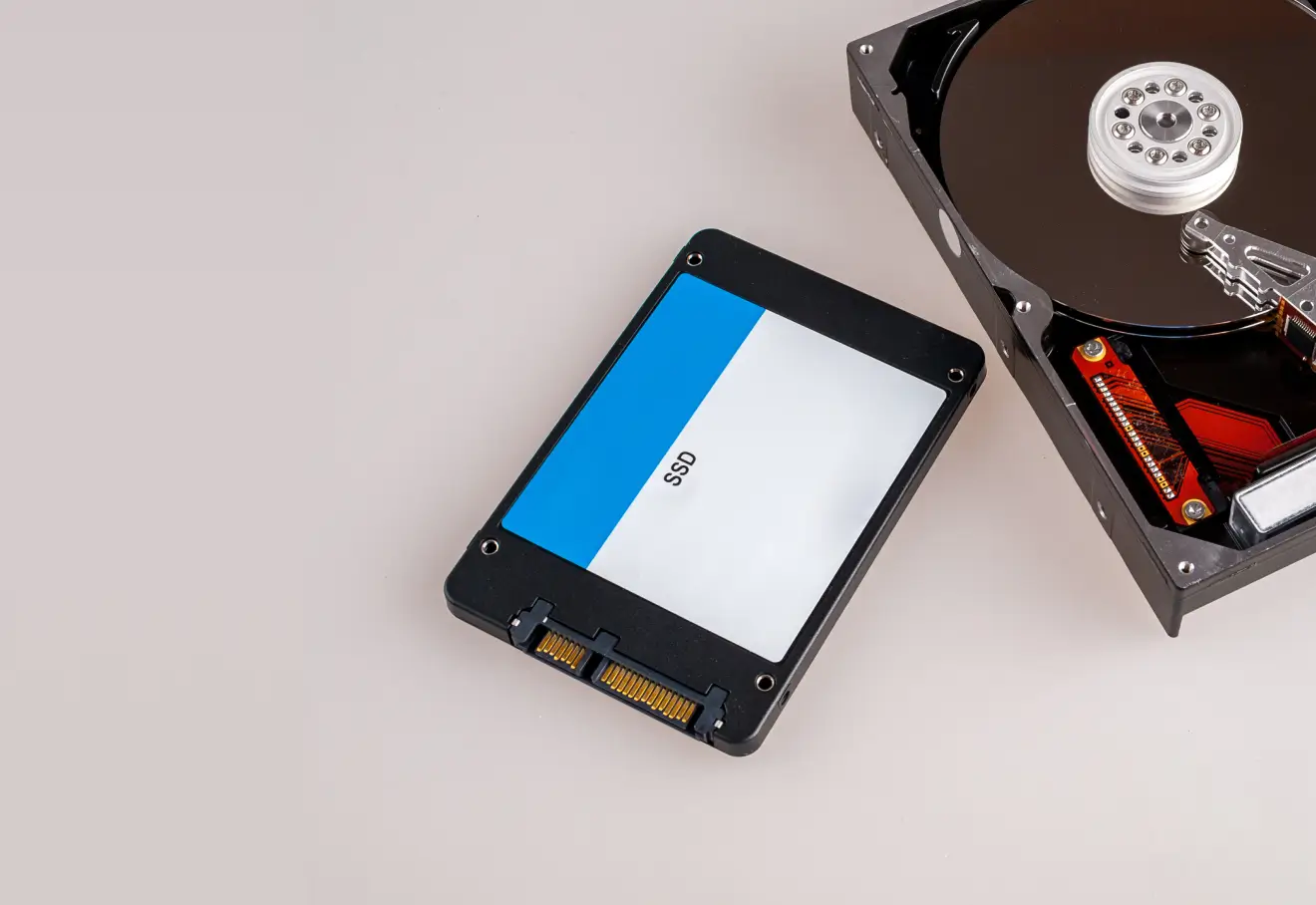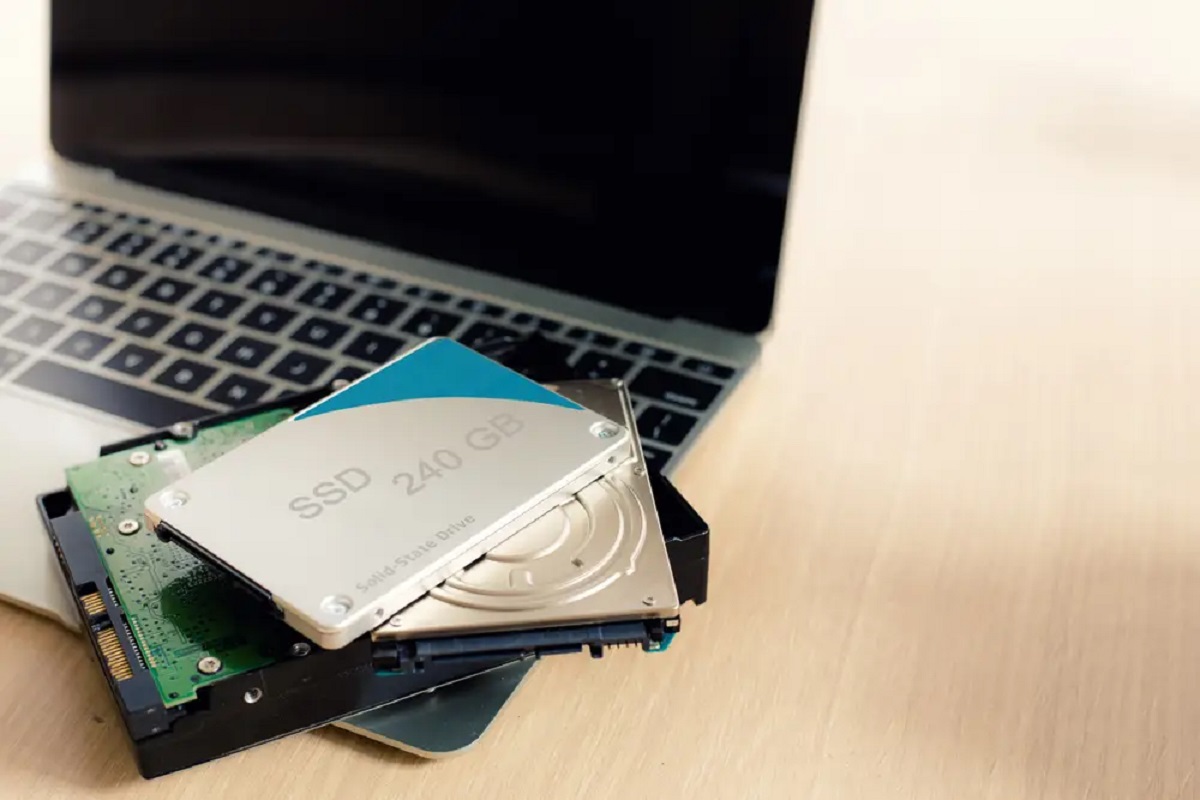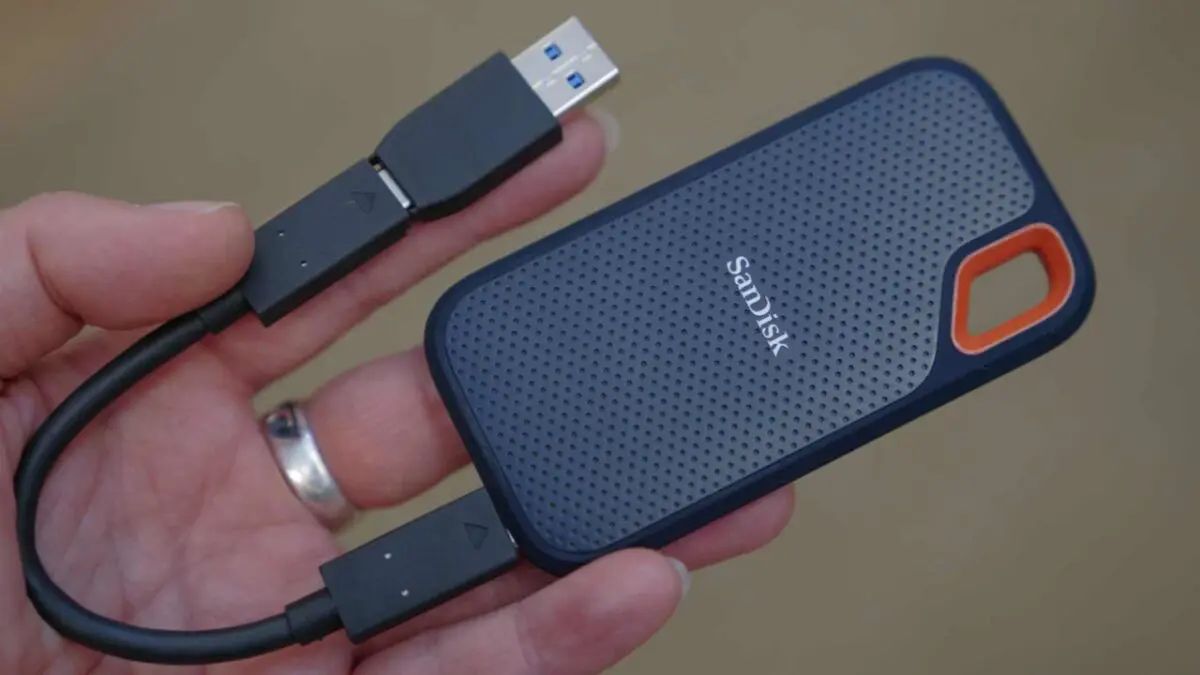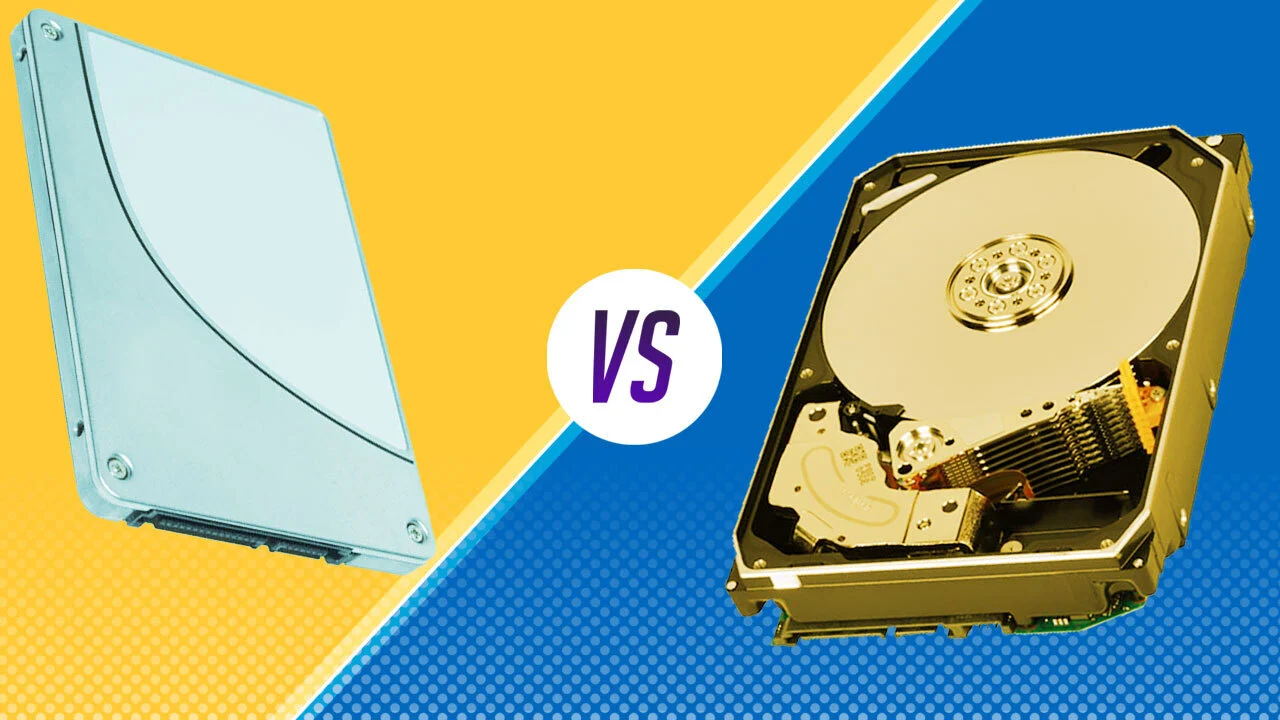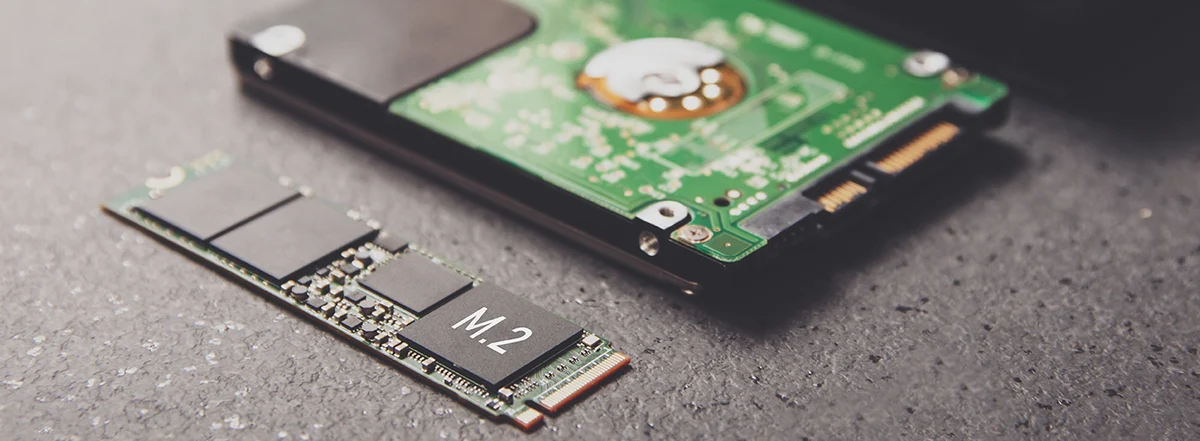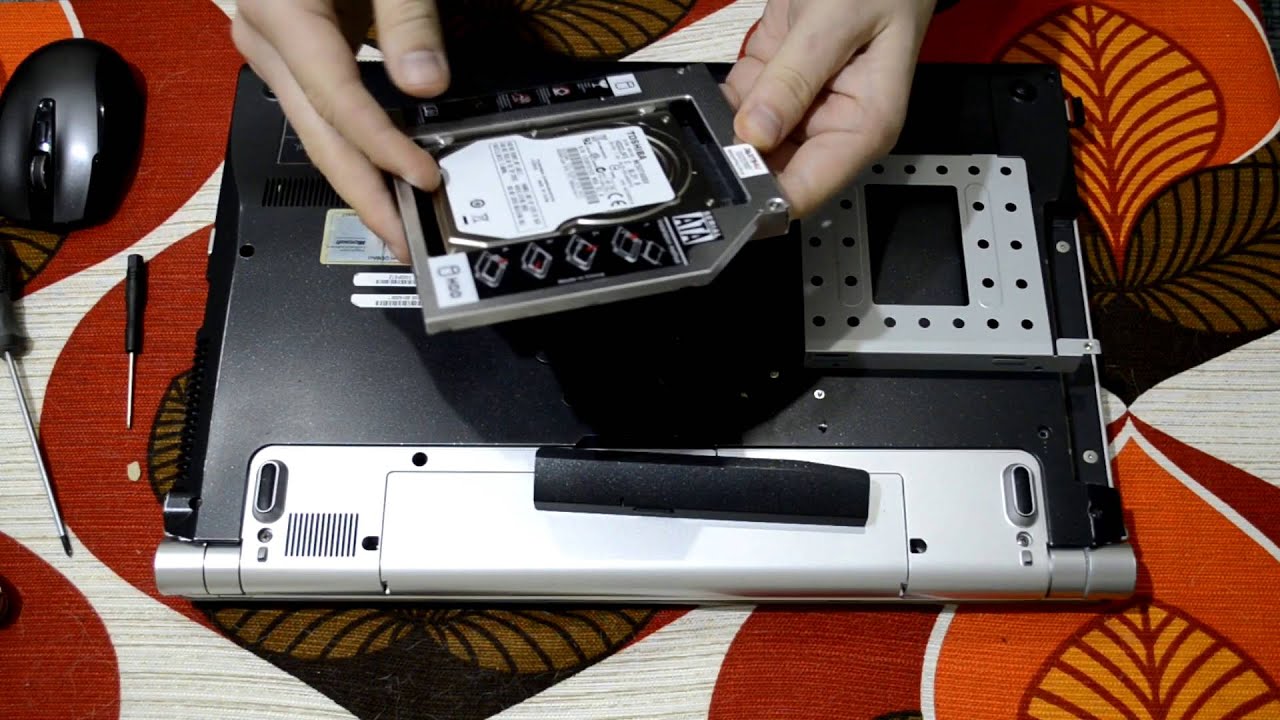What Are Solid State Drives?
Solid State Drives (SSDs) are storage devices that use flash memory technology to provide fast and reliable data storage. Unlike traditional hard drives, which use spinning disks and magnetic heads to read and write data, SSDs have no moving parts. Instead, they rely on integrated circuits to store and retrieve data electronically. This makes SSDs significantly faster and more durable than hard drives.
SSDs are available in various form factors, including laptop-sized 2.5-inch drives and smaller M.2 drives for ultra-thin devices. They are also becoming increasingly popular in the form of external drives and as storage options for gaming consoles.
One of the main advantages of SSDs is their speed. Because they don’t rely on mechanical components, SSDs can access data almost instantly, resulting in faster boot times, application launches, and file transfers. This can greatly improve overall system performance and reduce latency in various tasks.
In addition to speed, SSDs are also known for their reliability. With no moving parts, there is less chance of mechanical failure, making SSDs more resistant to shocks, vibrations, and temperature fluctuations. This makes them an ideal choice for portable devices that are frequently transported or used in harsh environments.
Another benefit of SSDs is their power efficiency. Compared to hard drives, which require the spinning of disks and movement of mechanical parts, SSDs consume less power. This results in longer battery life for laptops and less heat generation within the system.
However, it’s worth noting that SSDs tend to have a higher price per gigabyte compared to traditional hard drives. This means that, while SSDs offer superior performance and durability, they may not be the most cost-effective solution for users needing a large amount of storage space.
Nevertheless, the increasing availability and affordability of SSDs have made them a viable choice for many users, especially those who prioritize speed and reliability over sheer storage capacity. SSDs are an excellent option for those looking to upgrade their existing system or purchase a new device that can benefit from improved performance and responsiveness.
How Do Solid State Drives Work?
Solid State Drives (SSDs) utilize a complex technology called flash memory to store and retrieve data. Unlike traditional hard drives that rely on spinning disks and magnetic heads, SSDs have no moving parts. This design allows them to provide faster and more reliable performance.
At the core of an SSD are memory chips, typically made up of NAND flash memory. These memory chips are divided into cells, which can store electrical charge to represent binary data. Each cell can hold multiple bits of data, with the most common being single-level cell (SLC), multi-level cell (MLC), and triple-level cell (TLC).
When data needs to be written to an SSD, the controller sends an electrical charge to the appropriate cells, which then store the data as a series of electrical charges. To read the data, the controller measures the voltage levels of the cells to determine the stored data.
The controller of an SSD plays a crucial role in managing the operations of the drive. It handles tasks such as wear leveling, error correction, data encryption, and garbage collection. Wear leveling ensures that data is evenly distributed across the cells to prevent excessive wear on specific areas. Error correction algorithms help to detect and correct any errors that may occur during the reading or writing process.
SSDs also have a cache, which acts as a temporary storage area to improve performance. The cache holds frequently accessed data, allowing for faster retrieval without the need to access the main storage memory.
One area where SSDs excel is random access performance. Unlike hard drives that require physical movement to access data, SSDs can quickly access any piece of data regardless of its location. This makes them ideal for tasks that involve multiple data requests, such as multitasking, gaming, and loading large files.
While SSDs offer numerous advantages, it’s important to be aware that they have a finite lifespan. Each cell within an SSD can only endure a certain number of program/erase cycles before it becomes unreliable. Over time, this can lead to the deterioration of performance and eventual failure. However, modern SSDs employ various technologies such as over-provisioning and wear leveling to prolong their lifespan and ensure their overall reliability.
In summary, solid-state drives use flash memory technology to offer faster and more reliable performance compared to traditional hard drives. Their lack of moving parts allows them to access data quickly, withstand physical impact, and consume less power. Understanding how SSDs work can help users make informed decisions when selecting storage solutions for their devices.
Advantages of Solid State Drives
Solid State Drives (SSDs) offer several significant advantages over traditional hard drives. These advantages have made SSDs increasingly popular and sought-after in the world of data storage and computing.
One of the most noticeable advantages of SSDs is their speed. With no moving parts, SSDs can access data almost instantly. This results in faster boot times, quicker application launches, and swift file transfers. Tasks that involve reading or writing data, such as opening large files or performing backups, are significantly faster with an SSD.
In addition to speed, SSDs are known for their reliability. Since they lack mechanical components, such as spinning disks and moving heads, there is a lower risk of mechanical failure. This makes SSDs more resistant to shocks, vibrations, and temperature fluctuations. They are a particularly reliable choice for users who frequently transport their devices or operate in challenging environments.
SSDs also consume less power compared to traditional hard drives. With no need to spin disks or move mechanical parts, energy consumption is reduced. This benefits users in two ways: it can extend battery life for laptops and other portable devices, and it can lead to lower electricity costs for desktop computers and servers.
Another advantage of SSDs is their silent operation. Without any moving parts that can generate noise, SSDs operate silently. This can create a more pleasant and quiet computing environment, especially for users who require a noise-free setup, such as video editors or music producers.
Furthermore, SSDs are highly durable. With their solid-state design, they are less susceptible to damage from physical impacts or accidental drops. This makes them an excellent choice for users who depend on rugged and robust storage solutions, such as travelers, photographers, and professionals working in demanding industries.
SSDs are also more compact and lightweight compared to traditional hard drives. This makes them ideal for devices with limited space, such as ultrabooks and mini PCs. Additionally, their smaller size and lower weight contribute to the overall portability and ease of use of devices that incorporate SSDs.
Overall, the advantages of solid state drives – speed, reliability, power efficiency, silent operation, durability, and compactness – have contributed to their increasing adoption in various computing applications. Whether for personal computers, laptops, servers, or even gaming consoles, SSDs offer significant performance improvements that enhance the user experience and productivity.
Disadvantages of Solid State Drives
While solid state drives (SSDs) offer numerous advantages over traditional hard drives, they are not without their drawbacks. Understanding these disadvantages can help users make informed decisions when considering SSDs as their storage solution.
One of the main disadvantages of SSDs is their cost. SSDs tend to be more expensive per gigabyte compared to hard drives. Although the price of SSDs has decreased over the years, they still come at a higher price point, especially when it comes to larger storage capacities. This can be a limiting factor for users who require a large amount of storage space but have budget constraints.
Another disadvantage is the limited lifespan or endurance of SSDs. Each memory cell within an SSD can only endure a certain number of program/erase cycles before it becomes unreliable. While modern SSDs employ wear leveling techniques to distribute writes across the drive evenly, the fact remains that SSDs have a finite lifespan. This can be a concern for users who heavily use their drives for tasks that involve frequent writing of data, such as video editing or database management.
In terms of storage capacity, SSDs generally offer lower capacities compared to hard drives. While there are high-capacity SSDs available on the market, they are still significantly more expensive than equivalent hard drives. For users requiring terabytes of storage, SSDs may not be the most cost-effective option, leading them to opt for hard drives instead.
Another potential disadvantage of SSDs is their susceptibility to data loss in the event of power failure. Unlike hard drives that utilize mechanical components to write data, SSDs rely on electrical charges to store information. During a sudden power loss, the data that is in the process of being written to an SSD may not be properly saved, resulting in potential data loss or corruption. However, modern SSDs employ technologies such as power loss protection to mitigate this risk.
Lastly, while SSDs are generally known for their fast read and write speeds, their performance may degrade over time, especially if they approach their maximum storage capacity. As an SSD fills up, the available free space for wear leveling and garbage collection decreases, which can impact overall performance. However, performance degradation can be mitigated by periodically performing TRIM commands or using built-in SSD optimization tools.
Despite these disadvantages, the benefits of SSDs often outweigh their drawbacks for many users. The improved speed, reliability, efficiency, and durability that SSDs offer make them a compelling choice for those seeking enhanced performance and responsiveness in their computing experience. However, it’s important to consider these disadvantages alongside individual needs and priorities when making a decision regarding storage solutions.
What Are Hard Drives?
Hard drives, also known as hard disk drives (HDDs), are traditional storage devices that have been widely used in computers and other electronic devices for decades. Unlike solid state drives (SSDs) that use flash memory, hard drives utilize spinning disks, called platters, to store and retrieve data.
Inside a hard drive, there are several platters coated with a magnetic material. These platters spin rapidly at high speeds, typically ranging from 5,400 to 10,000 revolutions per minute (RPM). As the platters spin, a magnetic read/write head moves across the platter’s surface to read or write data. The head hovers just above the surface, utilizing the magnetic field to change the polarization of tiny regions, which represents the stored data.
The data on a hard drive is organized into concentric circles called tracks, with each track further divided into smaller sectors. These sectors are the smallest units of data that can be read or written to on a hard drive. The read/write head precisely positions itself over the desired track and waits for the sector to rotate underneath, allowing the data to be read or written.
Hard drives come in various form factors and storage capacities to accommodate different devices and user needs. The most common form factor is the 3.5-inch drive, typically used in desktop computers. However, for laptops and portable devices, smaller 2.5-inch drives are commonly used. Hard drives are also available in larger sizes for enterprise-level storage solutions and data centers.
One of the key advantages of hard drives is their affordability in terms of cost per gigabyte. Hard drives generally offer larger storage capacities at a lower cost compared to SSDs. This makes them a practical choice for users who require large amounts of storage space without breaking the bank.
While hard drives provide adequate storage capacity, their mechanical nature makes them slower compared to SSDs. The time required to physically move the read/write head and wait for the desired sector to rotate under the head introduces latency. As a result, tasks such as booting up the system, launching applications, and accessing large files may take longer on hard drives compared to SSDs.
Hard drives are also more susceptible to mechanical failures due to their moving parts. Factors such as shocks, vibrations, and drops can potentially damage the delicate read/write head or scratch the disk surface, leading to data loss or system failure. However, advancements in technology and design have significantly improved the durability and reliability of hard drives over the years.
In summary, hard drives are traditional storage devices that use spinning disks and magnetic heads to store and retrieve data. They offer larger storage capacities at a more affordable price, making them a reliable and cost-effective choice for users who prioritize storage capacity over speed and performance.
How Do Hard Drives Work?
Hard drives, also known as hard disk drives (HDDs), are intricate storage devices that have been used for many years in computers and other electronic devices. Understanding how hard drives work can shed light on their inner mechanisms and help users comprehend their functionality.
Hard drives consist of several components, including platters, read/write heads, actuator arms, and a spindle motor. The platters, which are circular disks made of a magnetic material, are the primary storage medium. They spin rapidly at high speeds, typically ranging from 5,400 to 10,000 revolutions per minute (RPM).
Mounted above and below each platter is a read/write head, which is responsible for reading and writing data. The read/write heads float just above the surface of the platters on a cushion of air created by the spinning motion. This enables them to access specific locations on the platters quickly and accurately.
To read data, the read/write head detects the changes in the magnetic field of the platter’s surface as it passes over the desired location. These changes represent the binary data stored on the drive. Similarly, to write data, the read/write head alters the magnetic field of the platter, effectively encoding the desired data.
The positioning of the read/write heads is controlled by an actuator arm mechanism. This mechanism moves the heads across the surface of the platters to the precise track that contains the requested data. This movement is facilitated by an actuator arm that rotates and positions the heads accordingly.
Within the hard drive, there is also a spindle motor responsible for spinning the platters. This motor provides the necessary speed to maintain the rotation of the platters, allowing the read/write heads to access different areas of the disk efficiently.
To manage and organize the data stored on the drive, hard drives utilize a file system. The file system organizes the data into structured and accessible formats, making it easier for the operating system and applications to locate and retrieve specific files or information.
Hard drives offer storage capacities ranging from a few hundred gigabytes to several terabytes, depending on the model. This makes them suitable for storing various types of data, including documents, images, videos, and applications.
Although hard drives have been the primary storage choice for many years, they do have certain limitations. One significant limitation is their mechanical nature, which results in slower read and write speeds compared to solid state drives (SSDs). The physical movement of the read/write heads and the need to wait for the desired location on the platter to rotate under the heads introduce latency and slower data transfer rates.
Despite their slower speeds, hard drives remain popular due to their affordability and large storage capacities. Their mechanical design also makes them suitable for tasks that involve large sequential data access, such as mass storage, multimedia storage, and archival purposes.
In summary, hard drives function by utilizing spinning disks, read/write heads, actuator arms, and a spindle motor to store and retrieve data. Although they may not offer the same speed as SSDs, hard drives provide ample storage capacities at a more affordable price point, making them a reliable choice for users who prioritize storage capacity over speed.
Advantages of Hard Drives
Hard drives, also known as hard disk drives (HDDs), have been the primary storage solution for computers and other devices for many years. While solid state drives (SSDs) have gained popularity, hard drives still offer several advantages that make them a viable choice for many users.
One of the main advantages of hard drives is their cost-effectiveness. Compared to SSDs, hard drives offer larger storage capacities at a lower cost per gigabyte. This makes them an ideal choice for users who require a significant amount of storage space without breaking the bank.
Hard drives also excel in terms of sequential read and write speeds. When it comes to transferring large files, such as videos or backups, hard drives can often outperform SSDs. Their high sequential speeds make them suitable for tasks that involve continuous data access, such as multimedia streaming or data backup.
Hard drives hold an advantage in terms of durability due to their mechanical design. While SSDs are prone to wear and tear over time, hard drives can withstand a considerable amount of physical impact and vibrations without compromising their functionality. This makes them a reliable option for users who require robust storage solutions, such as those in industrial or military environments.
Another advantage of hard drives is their ability to store data even when not connected to a power source. Once data is written to a hard drive, it remains there until it is overwritten or deleted. This makes hard drives suitable for long-term storage and backups, as the data persists even when the drive is powered off.
Hard drives also offer flexibility when it comes to upgrading or replacing them. Most computers and devices have standardized interfaces and form factors for hard drives, making it easy to swap out or add additional drives as needed. This flexibility allows users to expand their storage capacity or replace a faulty drive without significant effort or cost.
Additionally, hard drives are widely supported across different operating systems and platforms. Whether you are using Windows, macOS, or Linux, hard drives can be easily recognized and utilized by the system. This cross-compatibility makes hard drives a versatile storage solution for a wide range of devices and software environments.
Overall, the advantages of hard drives – cost-effectiveness, sequential read/write speeds, durability, data persistence, upgradeability, and cross-compatibility – continue to make them a popular choice for various storage needs. While SSDs offer faster speeds and better performance in certain scenarios, hard drives remain a reliable and affordable option for users seeking large storage capacities and dependable data preservation.
Disadvantages of Hard Drives
While hard drives have been the primary storage solution for many years, they do have several disadvantages compared to solid state drives (SSDs). Understanding these drawbacks can help users make informed decisions when considering storage options.
One of the main disadvantages of hard drives is their slower performance compared to SSDs. Hard drives rely on moving mechanical components, such as spinning disks and read/write heads, which results in latency and slower data access speeds. Tasks like booting up the system, launching applications, and accessing files may take longer on hard drives compared to SSDs. This can impact overall system responsiveness, especially when dealing with large amounts of data.
Hard drives are also more susceptible to mechanical failures due to their moving parts. Accidental drops, physical shocks, or sudden vibrations can potentially damage the fragile read/write heads or scratch the disk surface, resulting in data loss or drive failure. While advancements in technology have improved the durability of hard drives, they still possess a higher risk of failure than solid state drives.
Energy consumption is another notable disadvantage of hard drives compared to SSDs. Hard drives require power for both spinning the disks and moving the read/write heads, making them relatively power-hungry. This can lead to increased electricity costs for desktop computers and servers, as well as reduced battery life for laptops and portable devices.
In terms of portability, hard drives are relatively bulkier and more sensitive to external factors compared to SSDs. The moving parts and delicate components of hard drives make them more susceptible to damage if they are bumped, dropped, or exposed to extreme temperatures or magnetic fields. This limits their suitability for users who require highly portable and durable storage solutions, such as travelers or individuals working in harsh environments.
Additionally, hard drives generate noise during operation due to the spinning of disks and movement of mechanical components. This can be disruptive in quiet environments or in applications that require low noise levels, such as audio recording or sound mixing. SSDs, on the other hand, operate silently since they have no moving parts.
Lastly, although hard drives offer high storage capacities at a lower cost per gigabyte compared to SSDs, their prices have not decreased as rapidly. As a result, the cost per gigabyte of hard drives remains relatively stable, while SSDs have become more affordable over time. This may make SSDs a more attractive option for users who prioritize both performance and storage capacity.
Despite these disadvantages, hard drives continue to be widely used due to their cost-effectiveness and ample storage capacities. As technology evolves, newer hard drive models aim to address some of these limitations, offering improved performance, reliability, and power efficiency.
Which One Should You Choose: Solid State Drive or Hard Drive?
Choosing between a solid state drive (SSD) and a hard drive (HDD) depends on various factors, including your specific needs, budget, and priorities. Both types of storage solutions offer distinct advantages and disadvantages, so it’s essential to consider these factors when making a decision.
If speed and performance are your top priorities, an SSD is the way to go. SSDs offer significantly faster read and write speeds compared to hard drives, resulting in quicker system boot times, faster application launches, and swift file transfers. SSDs are particularly well-suited for tasks that require frequent data access, such as gaming, multimedia editing, and database management.
On the other hand, if you require large storage capacities at an affordable price, hard drives offer a cost-effective solution. Hard drives typically provide larger storage capacities at a lower cost per gigabyte compared to SSDs. This makes hard drives a practical choice for users who need substantial storage space for media libraries, data backups, or archival purposes.
In terms of durability, SSDs have an advantage. With no moving parts, SSDs are more resilient to physical shocks, vibrations, and temperature fluctuations. They are less prone to mechanical failure, making them a reliable choice for portable devices or systems subjected to harsh environments. Hard drives, with their mechanical components, are more susceptible to damage from physical impact and accidental drops.
Battery life is another factor to consider. SSDs consume less power compared to hard drives, leading to longer battery life for laptops and other portable devices. If portability and extended battery life are crucial, an SSD can be beneficial, especially for users who frequently work on the go.
For users who require compatibility across different platforms or operating systems, hard drives provide greater cross-compatibility. Hard drives are universally recognized and supported by various operating systems, including Windows, macOS, and Linux. SSDs also offer compatibility, but there may be some limitations or configurations specific to certain systems.
Ultimately, the choice between an SSD and a hard drive depends on finding the right balance between speed, capacity, cost, durability, and power efficiency that aligns with your specific needs. In situations where performance and responsiveness are critical, an SSD is the recommended choice. However, if you require a large amount of storage space at an affordable price, and speed is not a top priority, a hard drive can be a practical option.
In some cases, users opt for a combination of both storage solutions. This involves using an SSD as the primary drive to install the operating system and frequently access applications, while utilizing a hard drive for long-term storage and less frequently accessed files. This combination allows for the best of both worlds, with the speed of an SSD and the cost-effective storage capacity of a hard drive.
Ultimately, evaluating your needs, considering your budget, and understanding the benefits and limitations of both SSDs and hard drives will guide you toward the best choice for your specific requirements.
Conclusion
When it comes to choosing between a solid state drive (SSD) and a hard drive (HDD), there is no one-size-fits-all answer. Both types of storage solutions have their own advantages and disadvantages, and the right choice depends on your specific needs, priorities, and budget.
If you prioritize speed and performance, an SSD is the clear winner. With their fast read and write speeds, SSDs offer quicker boot times, faster application launches, and swift file transfers. They are ideal for tasks that require frequent data access, such as gaming, multimedia editing, and multitasking.
On the other hand, if you require large storage capacities at an affordable price, a hard drive is a cost-effective choice. Hard drives provide ample storage space at a lower cost per gigabyte, making them suitable for users with extensive media libraries, data backups, or archival needs.
Durability is another factor to consider. SSDs, with their lack of moving parts, are more resistant to physical shocks, vibrations, and temperature fluctuations. They offer greater reliability, particularly for portable devices or systems that operate in challenging environments. Hard drives, although more susceptible to mechanical failure, can still offer dependable performance with proper care.
Battery life is a consideration for users who require portability. SSDs’ reduced power consumption contributes to longer battery life for laptops and other portable devices, making them advantageous for users on the go. Hard drives, being more power-hungry, may drain the battery more quickly.
Compatibility across different platforms and operating systems is another aspect to keep in mind. Hard drives offer greater cross-compatibility, as they are universally recognized and supported by various operating systems. While SSDs also enjoy compatibility, some specific configurations or limitations may exist for certain systems.
In some cases, a combination of both SSD and hard drive can provide the best of both worlds. Utilizing an SSD as the primary drive for the operating system and frequently accessed applications, while using a hard drive for long-term storage, offers a balance between speed and cost-effective storage capacity.
In conclusion, the choice between an SSD and a hard drive ultimately comes down to your specific needs and priorities. Considering factors such as speed, capacity, cost, durability, power efficiency, and compatibility will help guide you toward the appropriate storage solution. Whether you opt for the blazing fast performance of an SSD or the affordability and larger capacities of a hard drive, both options have their merits and can serve as reliable storage solutions for your computing needs.







